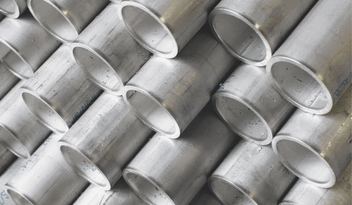Welded vs press-fit stainless steel tube: what is more cost-effective?
We often get asked if either welded stainless-steel tube or press-fit stainless-steel tube is more cost-effective, but the answer isn’t as simple as some may think. Both pipe joining methods have different cost factors which can increase or decrease the cost of a pipeline project depending on a range of factors and, simply put, some applications favour one over the other. In any piping project, the ultimate aim is to ensure it’s cost-effective, time-efficient, and long-lasting which is why we thought we’d explain the different cost factors for each system type so you can ascertain which is the best fit for your next project and unique requirements.
What makes welded stainless-steel tube different from press-fit stainless-steel tube?

Of course, the primary difference between welded stainless-steel tube and press-fit stainless-steel tube is that the first option is joined by welding the tube and fittings together and the latter is simply assembled and crimped together using a battery tool. Welding is the more traditional approach and has been used in pipework for centuries whereby localised extreme heat fuses the metal. It is a proven joining technique that, when done correctly to a high standard, produces strong and durable results.
Alternatively, press-fit is an extremely fast tube joining method that requires no welding or extreme heat. Looking specifically at the Europress press-fit range, the pipe is instead pressed using a battery-powered pressing tool which produces two deformations. The first (radial deformation) compresses the O-ring in the toroidal chamber and ensures the pipe is hermetically sealed. The second (geometric deformation) creates a mechanical joint that is resistant to slipping and rotation also creating a primary metal-to-metal seal. Joints produced using this method are very strong and rigid, as well as flexible enough to withstand potential stresses from the initial installation such as vibrations and thermal expansion.
Cost factors of welded stainless-steel tube
The core cost factors of welded stainless-steel tubes primarily consist of the material of the tube and fittings, as well as the labour time of the installer. Generally speaking, the cost of materials is less for welded when compared to press-fit. This is because the manufacturing process for welded fittings is less involved, and the fittings are less complex, and therefore less costly to produce. However, the cost of labour for welding is typically far higher. This is because you will often need an experienced welder who may come at a higher hourly rate, and welding is significantly more time consuming than press-fit technology.
Cost factors of press-fit stainless-steel tube
As for press-fit stainless-steel tube cost factors, the materials are often, but not always, more expensive. Whereas, the savings are in the installation as it is typically much faster. As a generalised statement, we say that savings of up to 30% can be achieved by using Europress as opposed to welded stainless steel. One factor that reduces the overall difference between the cost of welded and press-fit is, where there are a lot of fittings in a small length of tube, particularly in the larger sizes. However, where there are a lot of straight pipes that run with fewer fittings, the difference swings further in favour of press-fit.
The Pernod Ricard case study details a realistic stainless-steel welded vs Europress cost analysis. In this case, the total project saving was 37% when opting for a press-fit solution. A large portion of the tube used was larger sizes, ie 108mm. One additional consideration in evaluating the cost of welded stainless-steel tube vs press-fit tube is, the cost of downtime - this is often something that is not considered. The Pernod Ricard case study demonstrates that Europress was 58% faster than traditional welding. If a factory or operation needs to be shut down for an extended period for a project or maintenance, the costs of this are often huge and need to be considered when evaluating the overall project cost. In the case of Pernod Ricard, timely completion of the project was critical as storage was needed for the upcoming grape harvest. This meant that Europress stainless steel press-fit tube was by far the more cost-effective option in this context.
Which tube option is more cost-effective overall?
While both options are cost-effective in different applications, we have created a general rule of thumb when it comes to evaluating the overall cost. After discussion with various professionals in the piping industry, a ballpark average for welded systems is that 1/3 of the project cost will be materials, and 2/3 will be labour. For Europress, this reverses and is 2/3 materials and 1/3 labour. This is merely a ballpark figure but offers helpful guidance when you’re evaluating the cost factors for your next project. The below table outlines exactly what this could look like without even considering the cost of shutdowns or disruption to operations:
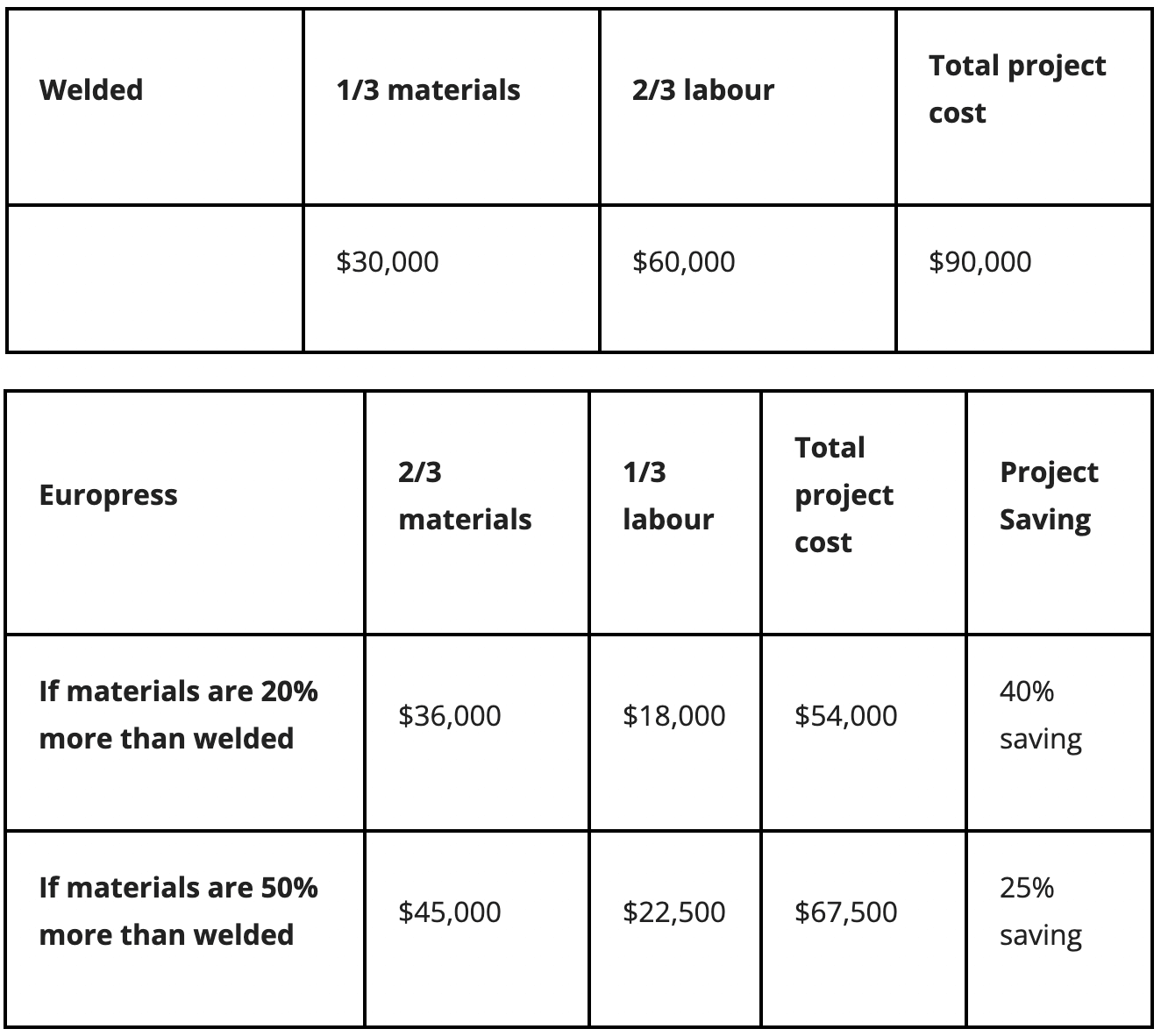
Ultimately, press-fit is often the more cost-effective option as it is more efficient to install and doesn’t require a highly experienced welder. In saying this, it does also have its limitations. For example, it’s not suitable for hygienic applications such as the conveyance of food products, etc. It’s ideal for piped services such as water, compressed air, glycol, gases, and some chemicals amongst other applications. Europress, and press-fit piping in general, is not suitable for all applications, therefore, it will never replace traditional welding. Rather, we say it works hand-in-hand, with the two systems complementing each other, whilst giving significant cost savings in some applications where it can be used. Europress comes in sizes of up to 168.3mm (6”), meaning that welded piping is required at sizes larger than this.
Both welding and press-fit tube joining methods are useful in their own right. It’s often the case that one installation method is simply better suited to a certain project or industry than the other. Waterworks is the New Zealand importer and distributor of both traditional welding solutions and Europress press-fit solutions. Our expansive range of tube and fitting options for both installation methods provide our customers with high-quality and long-lasting piping solutions. If you’re unsure about whether welded or press-fit pipe is more cost-effective or more suitable for your next piping project, please feel free to get in touch with one of our piping experts today. Otherwise, if you’re interested in seeing just how efficient the Europress press-fit pipe can be to install, simply download the Europress installation times brochure by clicking on the image below or watch the introductory product video.
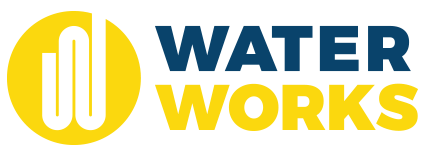
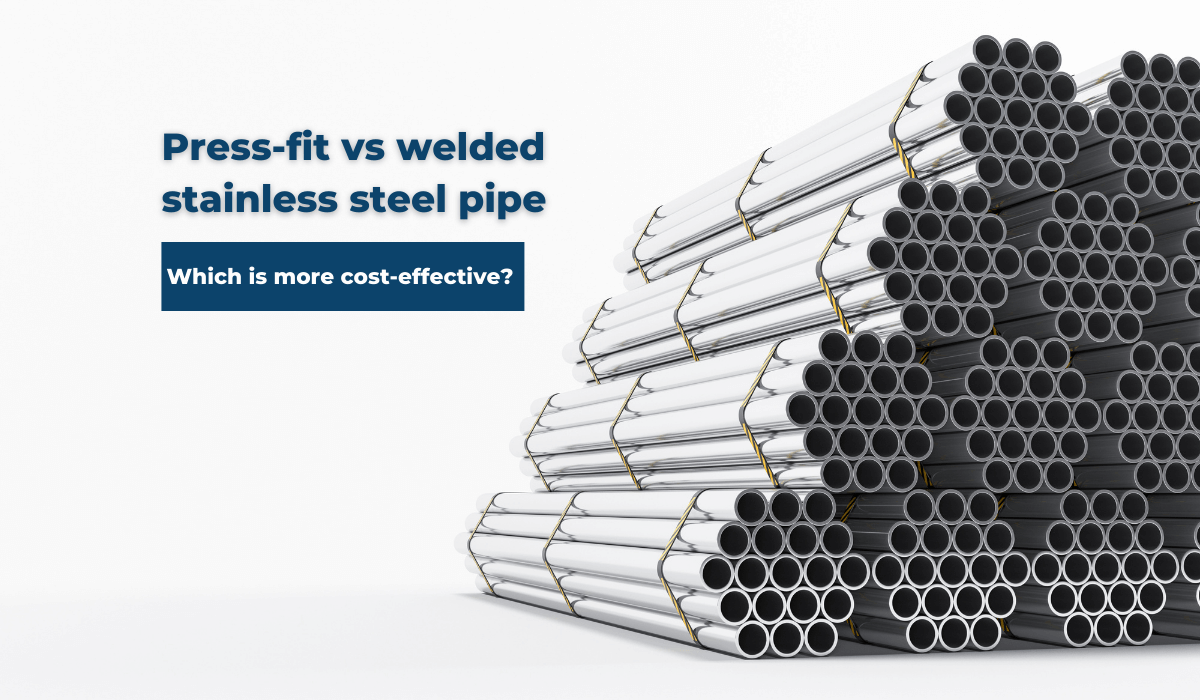
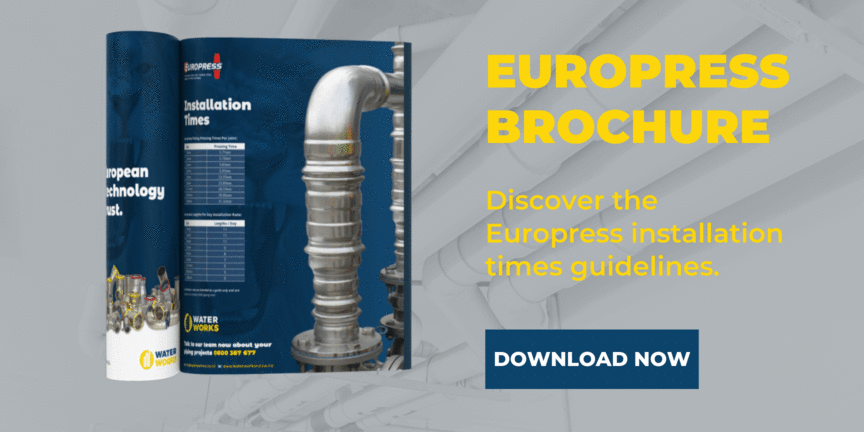
%20(1).png?width=352&name=Waterworks%20%20Press-fit%20vs%20Welding%20email%20graphic%20(1)%20(1).png)
